A friend was here for a visit (the reason I haven’t been blogging much!) and we spent a couple of hours last weekend at Mendon Ponds Park, a 2500-acre county park south of Rochester.
Here’s a pic.
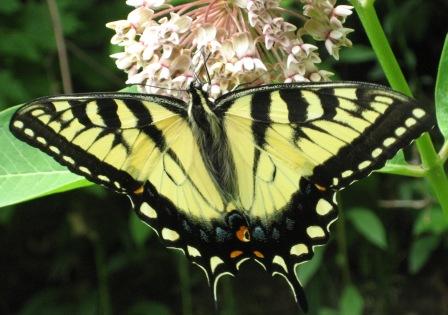
Isn’t he gorgeous?
Probably a “he” since the females usually have more blue on their hindwings, according to my butterfly field guide, Butterflies of North America by Jim Brock and Kenn Kaufman.
by Jim Brock and Kenn Kaufman.
What’s really interesting, though, is that if you went by the top of the wings (along with the range) you’d assume this is an Eastern Tiger Swallowtail (Papilio glaucus). But if you look at the underside of his wings . . .

. . . it’s not so clear cut.
You see, there’s a Canadian Tiger Swallowtail too (Papilio canadensis), and it has a range that happens to overlap the northern part of New York State.

The two species of butterflies are very similar, but on the Canadian, the yellow marginal band underneath the fore wing is continuous. Like this.
On an Eastern Tiger Swallowtail, that band would be broken — it would look like a series of dots.
But even that’s not the answer. My butterfly was big. Canadian Swallowtails are usually quite a bit smaller than Easterns. And the black stripe on the underside of the butterfly’s hind wing, closest to his body, would be a lot thicker if he were a Canadian.
As it turns out, the guide says differentiating between the two species “can be difficult along the lengthy, narrow strip where their ranges meet . . .” and to make it even more interesting, “some individuals appear intermediate.”
I’d say this is one of those individuals, wouldn’t you?
We saw several other species of butterfly while we were there — it’s a fantastic spot for butterfly watching, since there’s a terrific mix of wetlands and woodlands — but I wasn’t able to get nice photographs of the others.
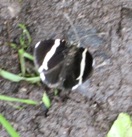 This was the best shot I got of this little guy, which is too bad, because the focus isn’t clear enough and I can’t ID him. I’m guessing it’s some kind of Skipper, but the closest in the guide is a Chisos Banded-Skipper, and they’re described as “rare, found in our area only in oak woodlands of Big Bend National Park, Texas.”
This was the best shot I got of this little guy, which is too bad, because the focus isn’t clear enough and I can’t ID him. I’m guessing it’s some kind of Skipper, but the closest in the guide is a Chisos Banded-Skipper, and they’re described as “rare, found in our area only in oak woodlands of Big Bend National Park, Texas.”
Maybe I’ll try to go back and get another pic. There were two or three of them around. It’s a small butterfly but the banding on the wings was pretty striking.
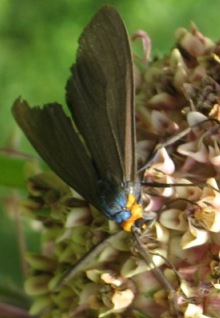 This isn’t a butterfly, but a Yellow-collared Scape Moth, Cisseps fulvicollis. He’s hit some hard times, judging by how raggedy the back edges of his wings are. These are really common moths around here — you see them all the time on flowers during the day. For some reason I find them just a touch creepy. They look like they’re up to something.
This isn’t a butterfly, but a Yellow-collared Scape Moth, Cisseps fulvicollis. He’s hit some hard times, judging by how raggedy the back edges of his wings are. These are really common moths around here — you see them all the time on flowers during the day. For some reason I find them just a touch creepy. They look like they’re up to something.
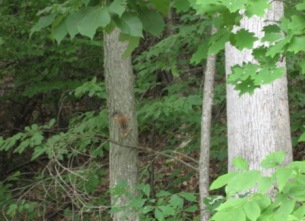 The park has other critters besides Lepidoptera. There are about a billion chipmunks.
The park has other critters besides Lepidoptera. There are about a billion chipmunks.
And of course, the requisite Canadian Geese. I liked this shot, only I wish the camera had captured a bit more detail on the head and neck of the goose in the foreground. The shots where I did get more detail, the goose wasn’t posing quite as nicely. Didn’t she know she was supposed to copy the arc of the log in the water? :-)
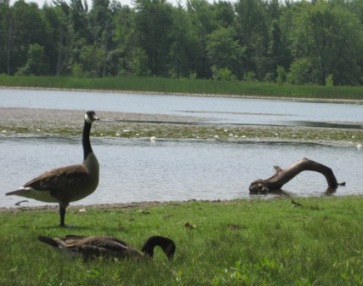

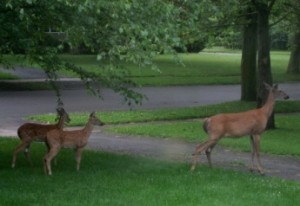
 Okay, excuse me while I flip out — but I can count on one hand the number of times I’ve seen one of these guys — then this afternoon, didn’t I walk out my back door and see a Pileated Woodpecker working the bark of a tree, right here in the ‘burbs!
Okay, excuse me while I flip out — but I can count on one hand the number of times I’ve seen one of these guys — then this afternoon, didn’t I walk out my back door and see a Pileated Woodpecker working the bark of a tree, right here in the ‘burbs!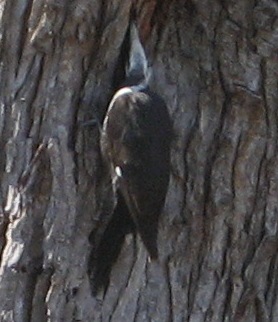
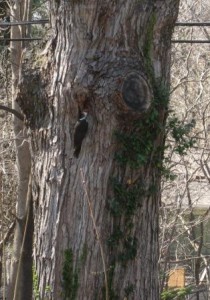 Pileated Woodpeckers need a habitat with mature forest and lots of deadwood. Must be there’s enough of the stuff he likes in Brighton . . . I sure hope so, would love to see this fellow again sometime!
Pileated Woodpeckers need a habitat with mature forest and lots of deadwood. Must be there’s enough of the stuff he likes in Brighton . . . I sure hope so, would love to see this fellow again sometime!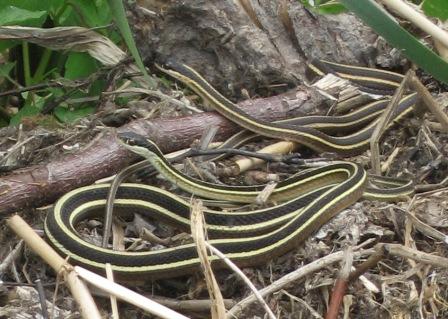

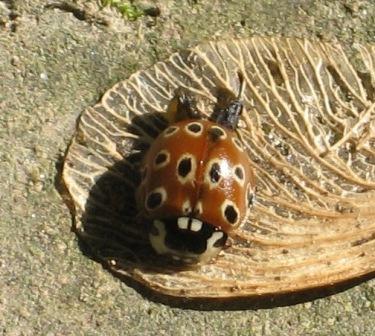



 This was the best shot I got of this little guy, which is too bad, because the focus isn’t clear enough and I can’t ID him. I’m guessing it’s some kind of Skipper, but the closest in the guide is a Chisos Banded-Skipper, and they’re described as “rare, found in our area only in oak woodlands of Big Bend National Park, Texas.”
This was the best shot I got of this little guy, which is too bad, because the focus isn’t clear enough and I can’t ID him. I’m guessing it’s some kind of Skipper, but the closest in the guide is a Chisos Banded-Skipper, and they’re described as “rare, found in our area only in oak woodlands of Big Bend National Park, Texas.” This isn’t a butterfly, but a Yellow-collared Scape Moth, Cisseps fulvicollis. He’s hit some hard times, judging by how raggedy the back edges of his wings are. These are really common moths around here — you see them all the time on flowers during the day. For some reason I find them just a touch creepy. They look like they’re up to something.
This isn’t a butterfly, but a Yellow-collared Scape Moth, Cisseps fulvicollis. He’s hit some hard times, judging by how raggedy the back edges of his wings are. These are really common moths around here — you see them all the time on flowers during the day. For some reason I find them just a touch creepy. They look like they’re up to something. The park has other critters besides Lepidoptera. There are about a billion chipmunks.
The park has other critters besides Lepidoptera. There are about a billion chipmunks.